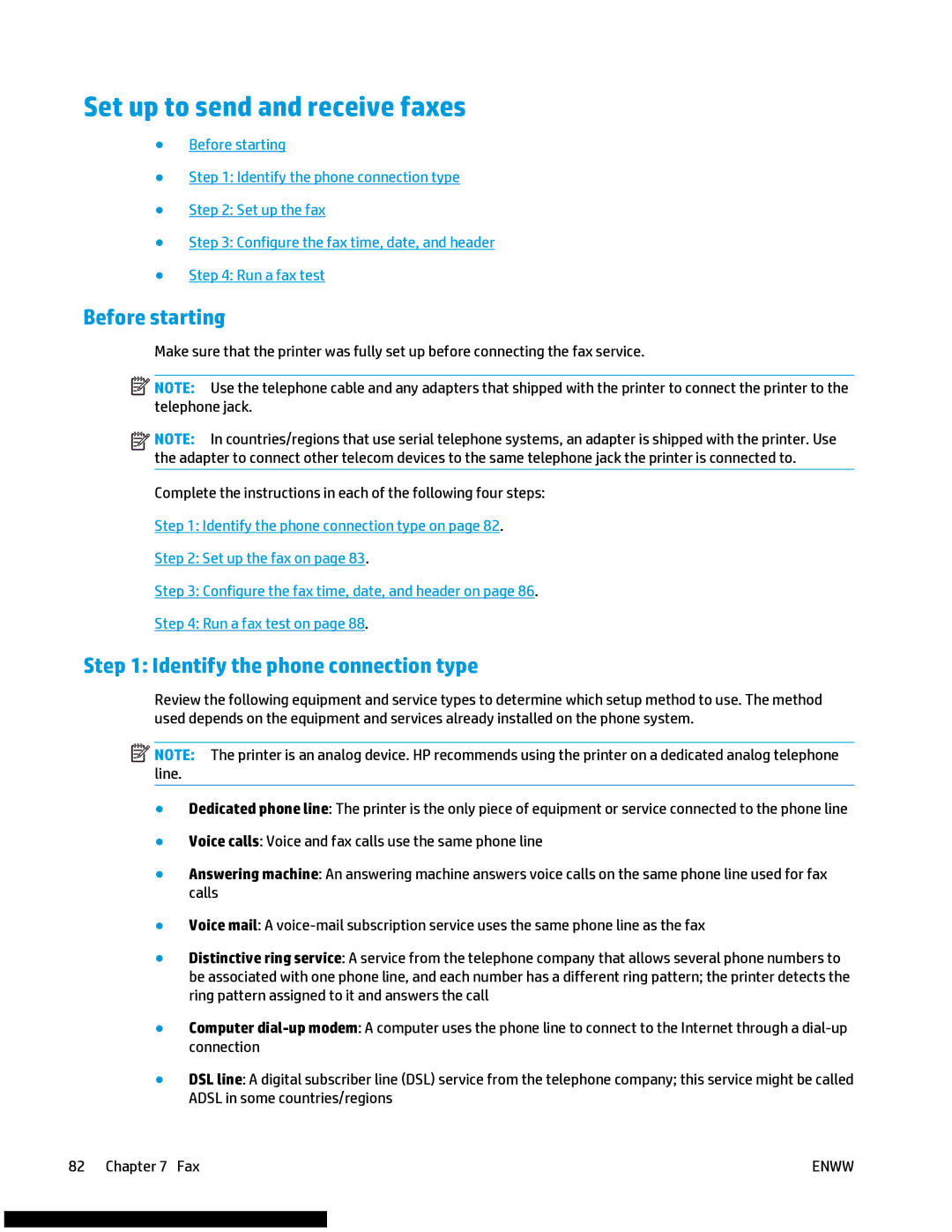
Set up to send and receive faxes
●Before starting
●Step 1: Identify the phone connection type
●Step 2: Set up the fax
●Step 3: Configure the fax time, date, and header
●Step 4: Run a fax test
Before starting
Make sure that the printer was fully set up before connecting the fax service.
![]() NOTE: Use the telephone cable and any adapters that shipped with the printer to connect the printer to the telephone jack.
NOTE: Use the telephone cable and any adapters that shipped with the printer to connect the printer to the telephone jack.
![]()
![]()
![]()
![]() NOTE: In countries/regions that use serial telephone systems, an adapter is shipped with the printer. Use the adapter to connect other telecom devices to the same telephone jack the printer is connected to.
NOTE: In countries/regions that use serial telephone systems, an adapter is shipped with the printer. Use the adapter to connect other telecom devices to the same telephone jack the printer is connected to.
Complete the instructions in each of the following four steps:
Step 1: Identify the phone connection type on page 82.
Step 2: Set up the fax on page 83.
Step 3: Configure the fax time, date, and header on page 86.
Step 4: Run a fax test on page 88.
Step 1: Identify the phone connection type
Review the following equipment and service types to determine which setup method to use. The method used depends on the equipment and services already installed on the phone system.
![]() NOTE: The printer is an analog device. HP recommends using the printer on a dedicated analog telephone line.
NOTE: The printer is an analog device. HP recommends using the printer on a dedicated analog telephone line.
●Dedicated phone line: The printer is the only piece of equipment or service connected to the phone line
●Voice calls: Voice and fax calls use the same phone line
●Answering machine: An answering machine answers voice calls on the same phone line used for fax calls
●Voice mail: A
●Distinctive ring service: A service from the telephone company that allows several phone numbers to be associated with one phone line, and each number has a different ring pattern; the printer detects the ring pattern assigned to it and answers the call
●Computer
●DSL line: A digital subscriber line (DSL) service from the telephone company; this service might be called ADSL in some countries/regions
82 Chapter 7 Fax | ENWW |
